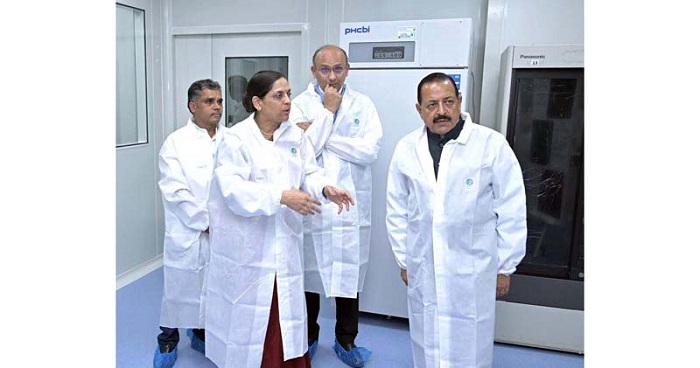
India has long stood at the forefront of healthcare innovation, and recent advances in biotechnology have further solidified its position as a global leader in medical science. Among the most notable breakthroughs in recent years is a pioneering achievement from Bengaluru’s BRIC-inStem—the Biotechnology Research and Innovation Centre in collaboration with the Institute for Stem Cell Biology and Regenerative Medicine.
This institution has led a major leap in India’s bio-revolution through its development of gene therapy for haemophilia, a genetic bleeding disorder that has posed longstanding challenges to treatment, Indian media reports.
Addressing a Lifelong Disorder
Haemophilia is a rare inherited condition that impairs the body’s ability to form blood clots, resulting in spontaneous or prolonged bleeding episodes. Conventional treatments, such as regular infusions of clotting factors, have been used to manage the disease. However, these treatments are costly, require lifelong administration, and may not be readily accessible in all regions.
Now, thanks to advanced research at BRIC-inStem, gene therapy is offering hope—not merely for symptom management, but for a potential cure. By delivering a functional copy of the defective clotting factor gene directly into the patient’s body, this therapy targets the root cause of haemophilia. It enables the patient to naturally produce clotting factors, potentially reducing or eliminating the need for repeated infusions.
BRIC-inStem: At the Heart of India’s Biotechnology Revolution
Bengaluru, widely known as the “Silicon Valley of India,” is fast becoming the nucleus of the country’s biotechnology transformation. At the center of this shift is BRIC-inStem, an institution driving innovation in gene therapy, stem cell biology, and regenerative medicine. Established to address some of the world’s most pressing medical challenges, BRIC-inStem has evolved into a hub for breakthrough therapies.
With contributions from top scientists, clinicians, and biotech innovators, BRIC-inStem is spearheading a transformative era in Indian healthcare. Its recent success in developing gene therapy for haemophilia underscores the growing strength and international relevance of India’s biotech sector. By tackling complex genetic disorders with cutting-edge treatments, the institute is positioning India as a global trailblazer in life sciences.
Transforming Haemophilia Treatment
The gene therapy developed by BRIC-inStem involves the delivery of a healthy version of the clotting factor gene into patients. This innovative approach not only corrects the genetic defect but offers the possibility of a long-term solution to a condition that previously required lifelong management.
Crucially, the research is being conducted in collaboration with leading Indian medical institutions, ensuring that the benefits of this breakthrough are accessible to the patients who need them most. The therapy has demonstrated both high efficacy and safety, representing a major step forward in haemophilia care.
What makes this development particularly impactful is its potential scalability. In a country like India, where genetic disorders are prevalent and access to continuous care can be limited, a one-time or long-term therapeutic intervention could revolutionize patient outcomes. It could significantly reduce healthcare costs, improve patient quality of life, and alleviate the socioeconomic burdens associated with chronic illness.
Expanding Frontiers in Regenerative Medicine
BRIC-inStem’s contributions are not limited to gene therapy. The institute is also advancing the field of regenerative medicine—an area focused on repairing or replacing damaged tissues and organs through the body’s natural healing processes. This is especially critical for conditions that lack effective treatments through traditional methods.
Through pioneering work in stem cell research and tissue engineering, BRIC-inStem is developing therapies that could one day replace failing organs, treat degenerative diseases, and repair complex injuries such as spinal cord damage. These advancements represent the convergence of biotechnology and personalized medicine, where innovative science enhances the body’s own capacity to heal.
When combined with gene therapy, regenerative medicine offers a vision of healthcare that is not just reactive, but restorative—one where conditions once deemed incurable are addressed at their biological roots.
India’s Global Role in Biotech Innovation
With BRIC-inStem at the forefront, India is asserting its role as a global force in biotechnology. The country’s rapidly maturing biotech ecosystem is characterized by world-class research, cross-sector collaboration, and a focus on scalable, affordable healthcare solutions.
India’s approach—developing cutting-edge therapies that are also accessible—sets it apart from many Western counterparts. In contrast to high-cost models that often limit patient access, India is creating therapies that can be deployed at population scale. This is especially critical given the high incidence of genetic disorders within the country and the urgent need for equitable healthcare solutions.
BRIC-inStem’s achievements exemplify this approach, showcasing how India is not only contributing to global science but doing so in a way that prioritizes public health impact.
A New Dawn for Haemophilia Patients
The implications of BRIC-inStem’s work in gene therapy for haemophilia are profound. For patients who have long lived under the constraints of chronic treatment, the promise of a durable or permanent solution signals a transformative shift in care.
Beyond reducing hospital visits and medical expenses, gene therapy offers a future in which individuals with haemophilia can enjoy greater freedom, improved health, and enhanced participation in daily life. It marks a shift from disease management to potential cure—a leap that redefines what is possible in genetic medicine.
This accomplishment also serves as a foundation for broader innovation. It demonstrates that India is not only capable of pioneering high-impact research, but also translating it into treatments that change lives.
Looking Ahead: A Bright Future for Indian Biotech
As BRIC-inStem continues to lead in gene therapy and regenerative science, the future of Indian biotechnology looks exceptionally promising. With a focus on translational research, global collaboration, and patient-centric outcomes, India is poised to become a key driver of the next generation of medical breakthroughs.
The successful development of gene therapy for haemophilia is just the beginning. With continued investment, support, and innovation, India is on track to reshape the global healthcare landscape—delivering hope, healing, and progress to millions.
Bengaluru’s BRIC-inStem stands as a beacon of this progress, exemplifying how science, when backed by vision and commitment, can transform the future of medicine not just in India, but around the world.